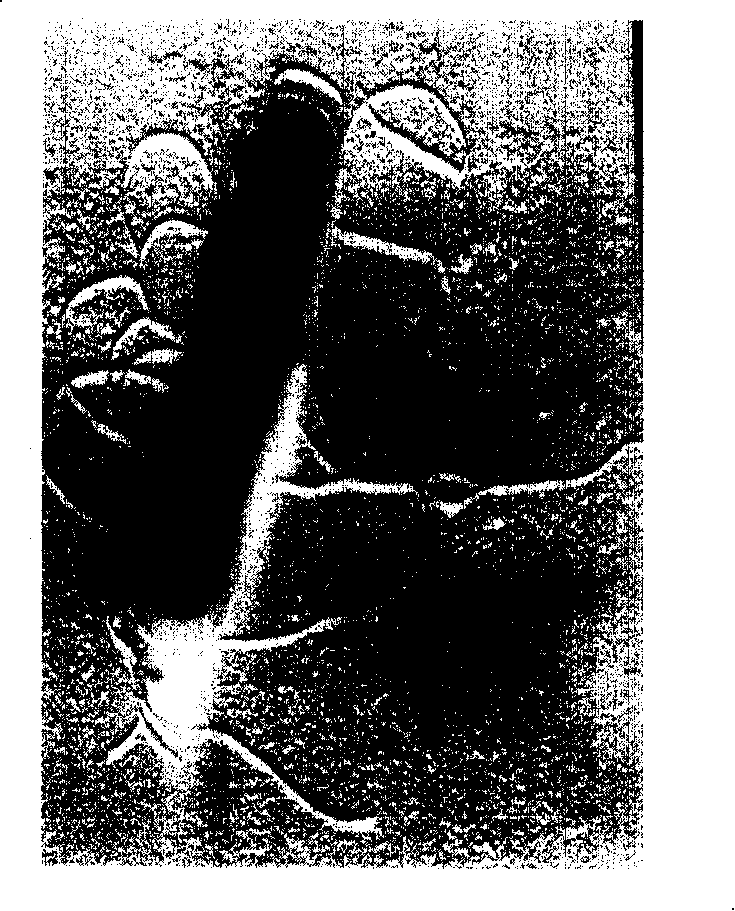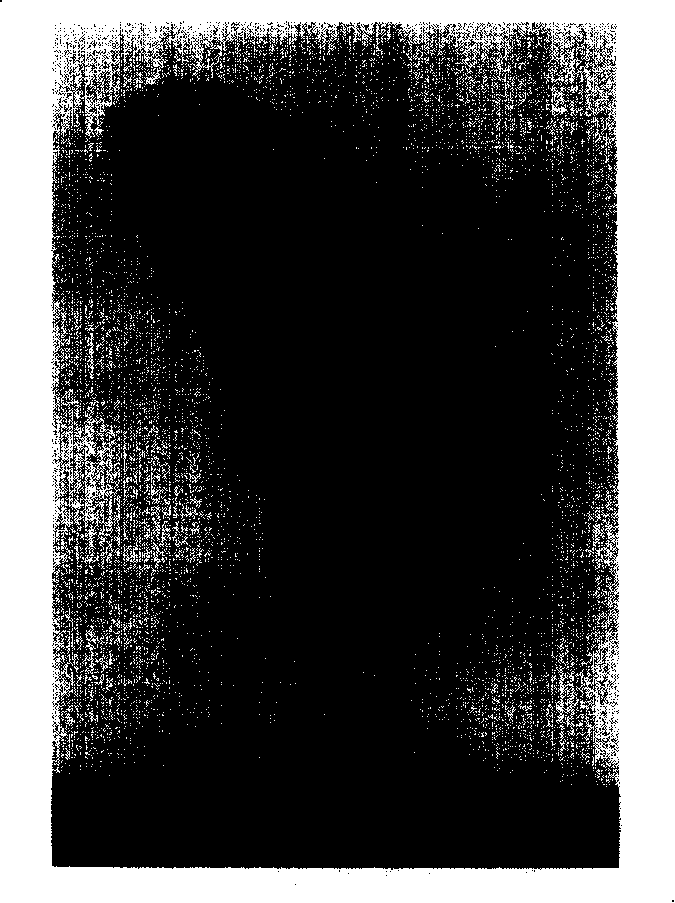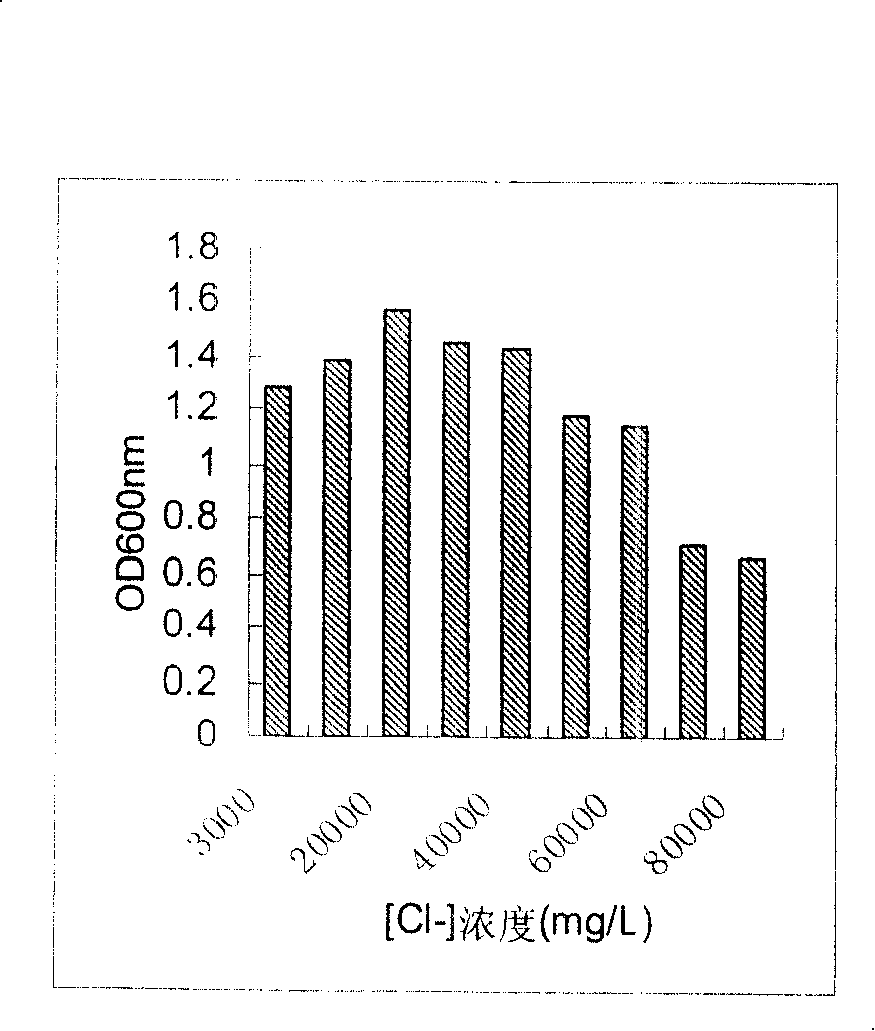Chloride ion resistant strain S616 and its screening method
A technology of S616 and strains, applied in chemical instruments and methods, methods based on microorganisms, biochemical equipment and methods, etc., can solve the problems of high organic matter, high concentration of chloride ions, weak research, etc., and achieve efficient degradation effect
- Summary
- Abstract
- Description
- Claims
- Application Information
AI Technical Summary
Problems solved by technology
Method used
Image
Examples
Embodiment Construction
[0032] 1. Screening method for a chlorine-resistant bacterial strain S616:
[0033] (1) Material preparation:
[0034] 1. Bacterial source and experimental wastewater:
[0035] (1) Bacterial source: activated sludge in the biochemical system for treating saponin wastewater;
[0036] (2) Experimental waste water (i.e. mixed saponin waste water): taken from the saponin production waste water of Fangkun Real Estate Co., Ltd., Shiyan City, Hubei Province; after internal electrolysis and CaO deployment, the specific indicators are: pH = 7.5-8.2, COD = 4000 -17000mg / L, Cl - =8000-30000mg / L, NH 4 -N 140-300mg / L.
[0037] 2. Culture medium:
[0038] Separation medium: CH 3 CH 2 COONa 30mmol, CH 3 CH 2 CH 2COONa 30mmol, CH 3 CHOHCOONa30mmol, yeast 2.0g, MgCl 2 0.1g, NH 4 Cl 1.0g, K 2 HPO4 0.4g, resazurin 0.002g, cysteine 0.5g, distilled water 1000ml, pH=7.0~73.
[0039] Screening medium: MgSO4 7H 2 O, 0.2g / L, KH 2 PO 4 0.5g / L, K 2 HPO 4 1.5g / L, NH 4 Cl 0.5 / L, ...
PUM
 Login to View More
Login to View More Abstract
Description
Claims
Application Information
 Login to View More
Login to View More - R&D Engineer
- R&D Manager
- IP Professional
- Industry Leading Data Capabilities
- Powerful AI technology
- Patent DNA Extraction
Browse by: Latest US Patents, China's latest patents, Technical Efficacy Thesaurus, Application Domain, Technology Topic, Popular Technical Reports.
© 2024 PatSnap. All rights reserved.Legal|Privacy policy|Modern Slavery Act Transparency Statement|Sitemap|About US| Contact US: help@patsnap.com










